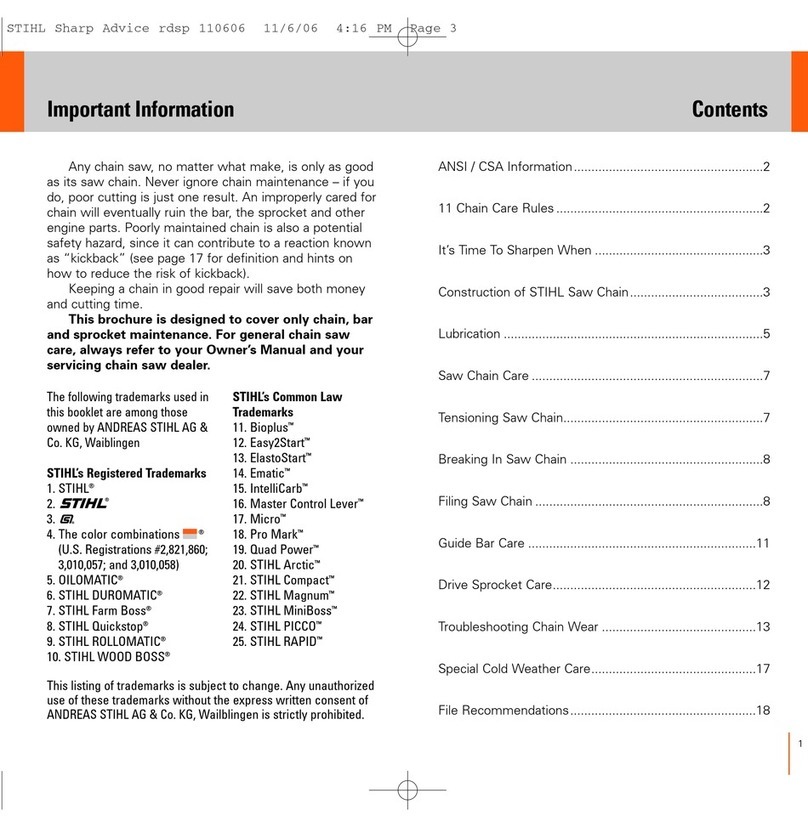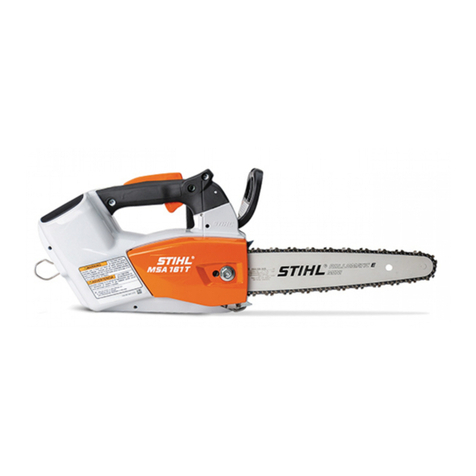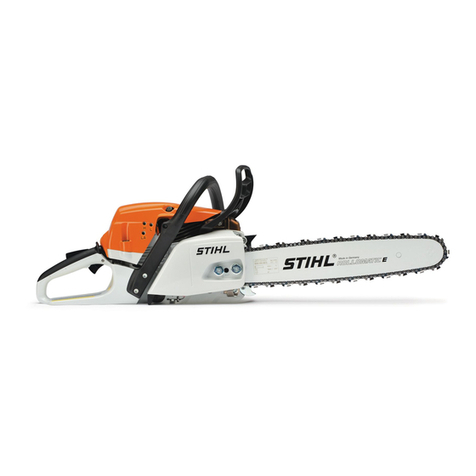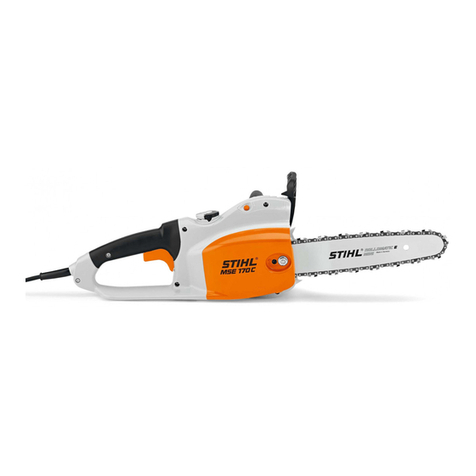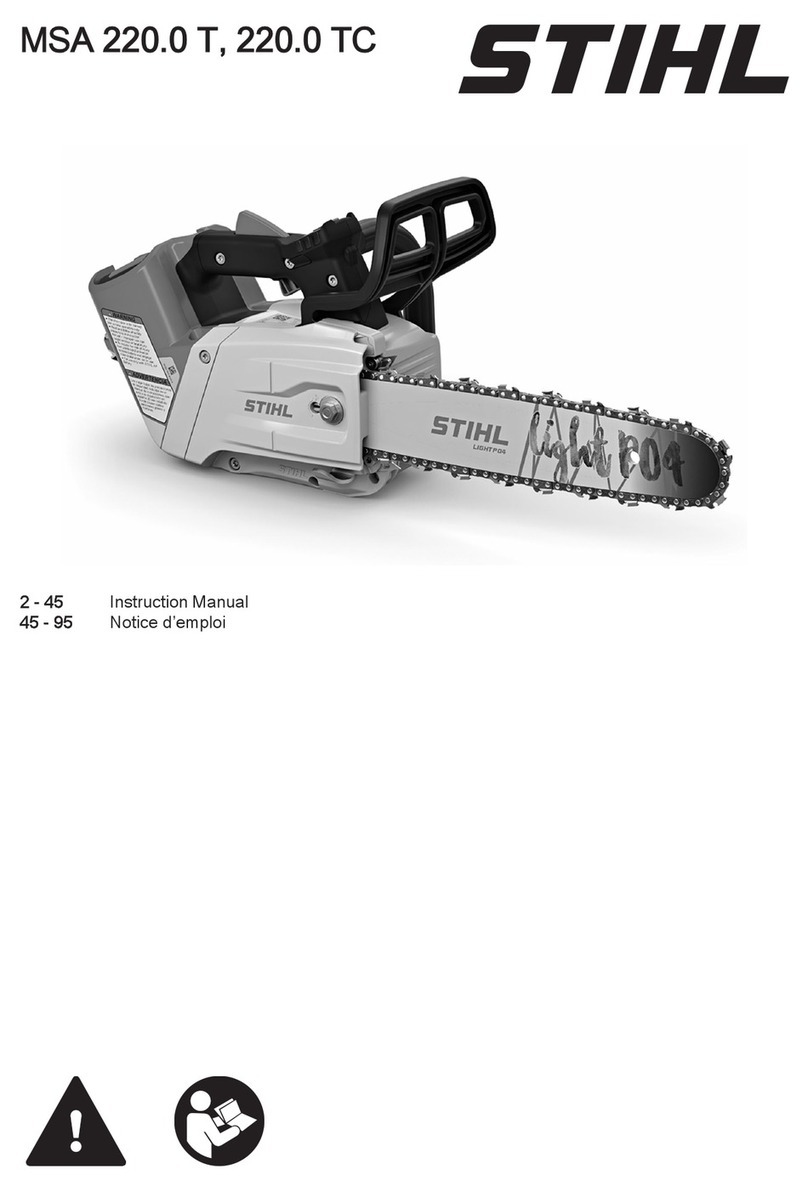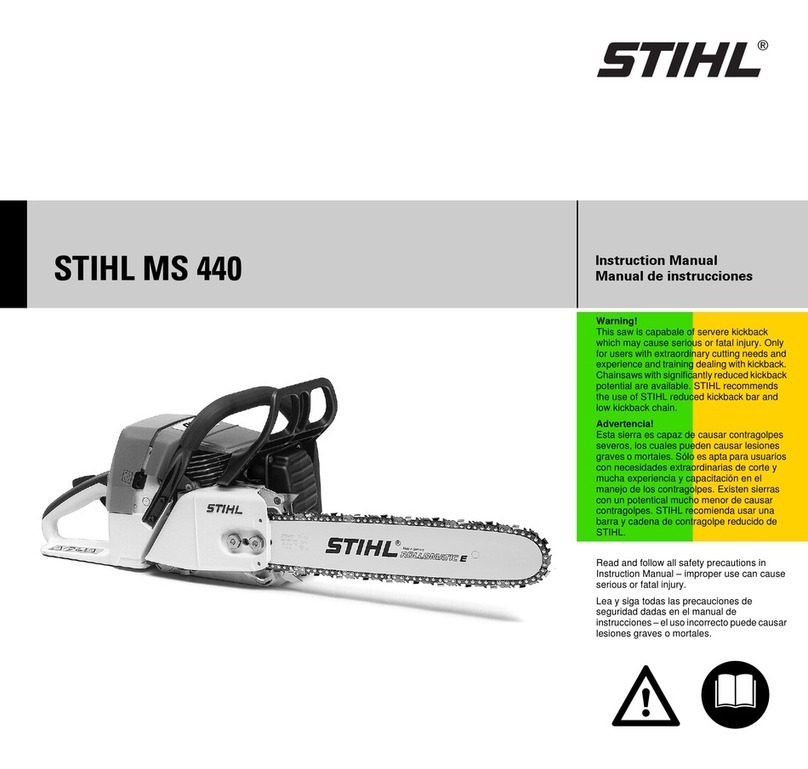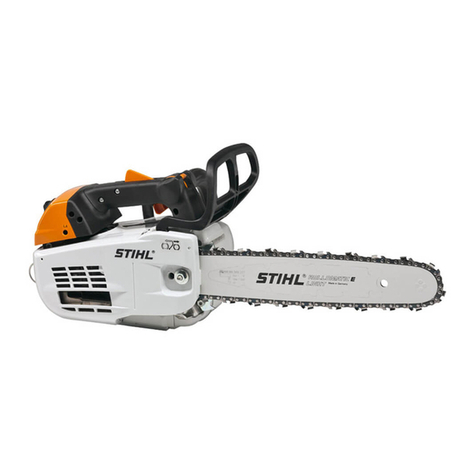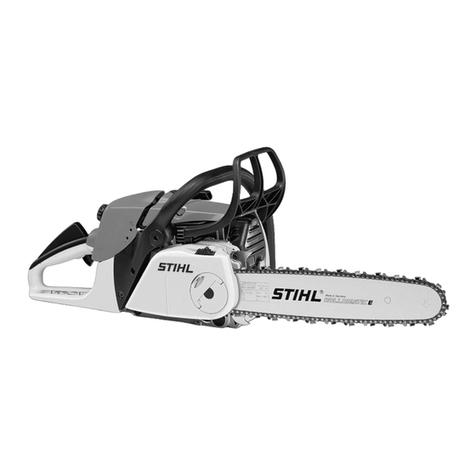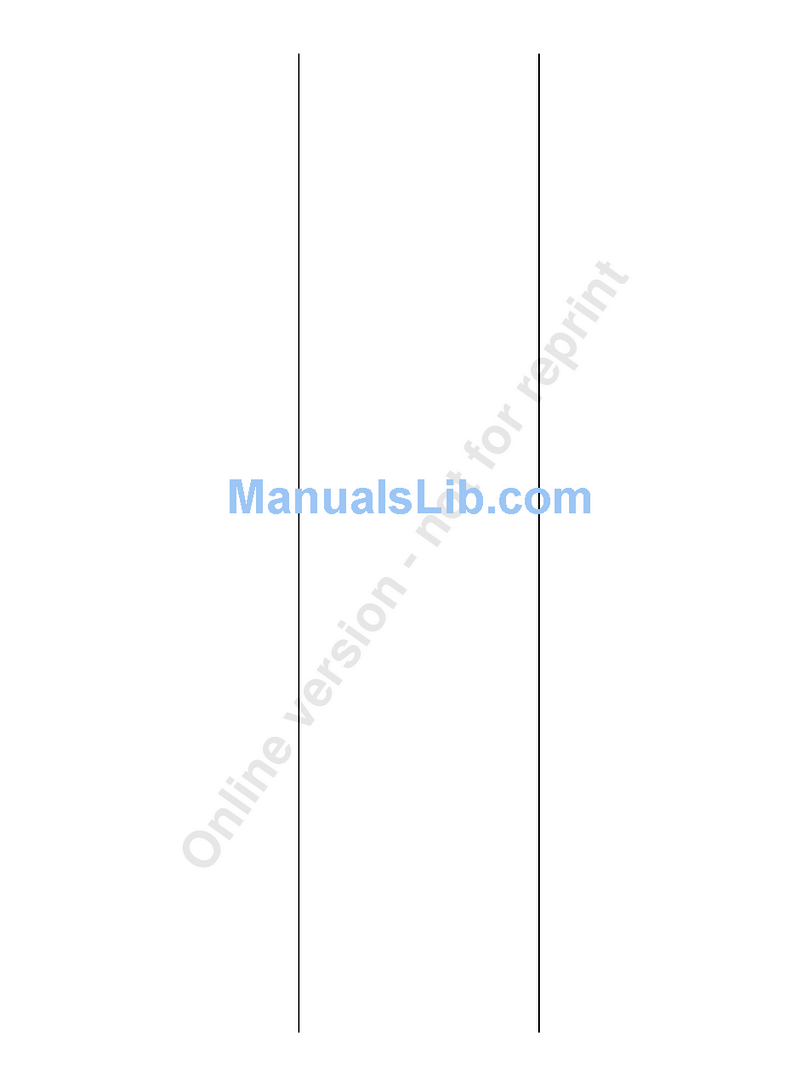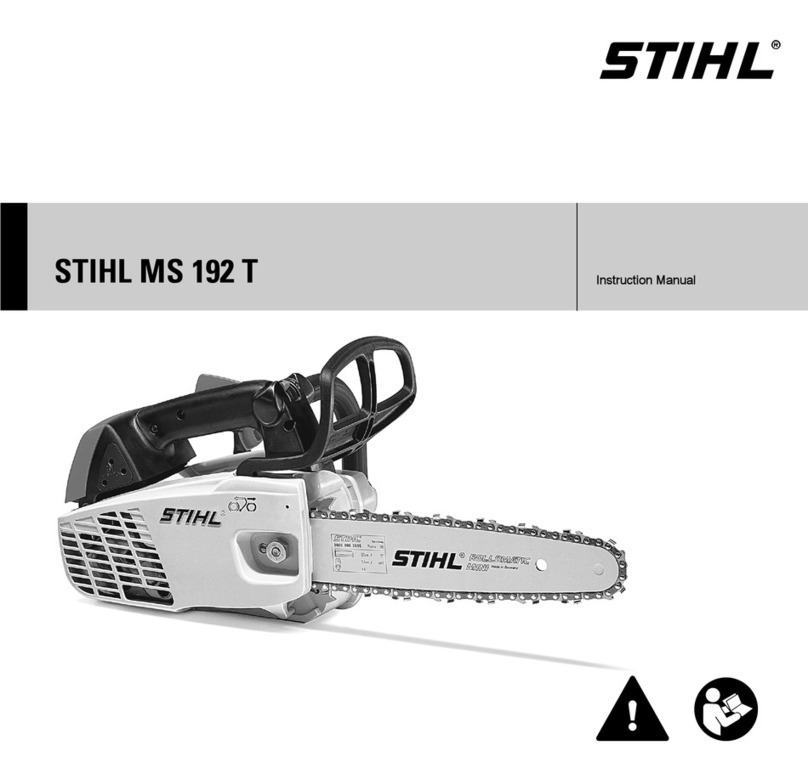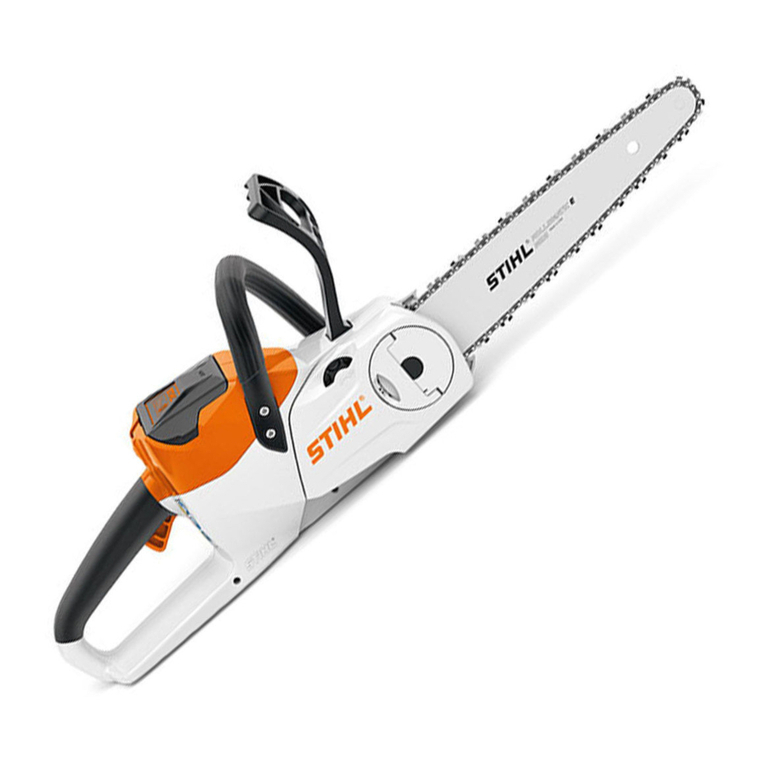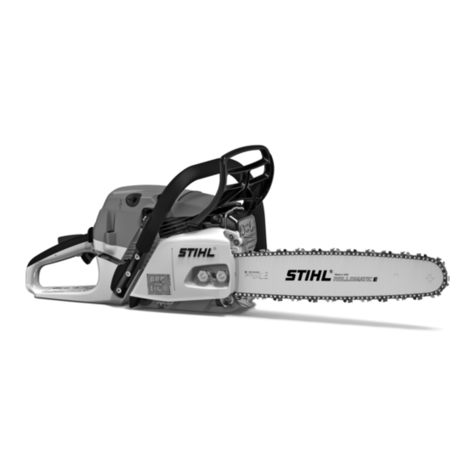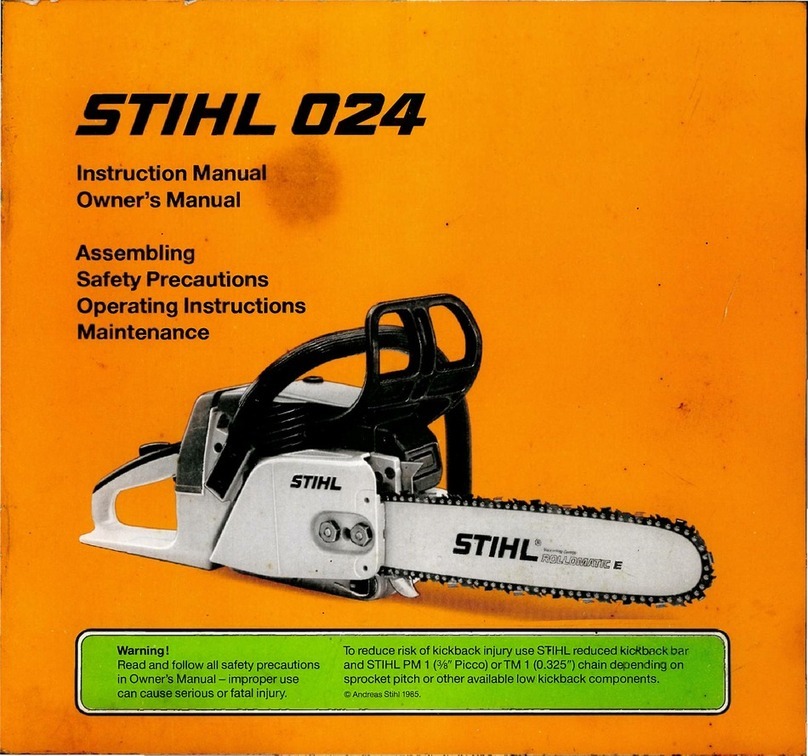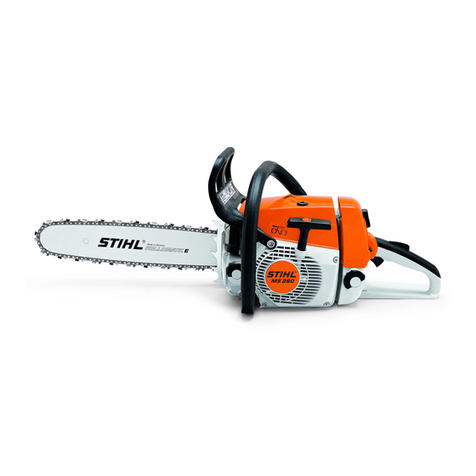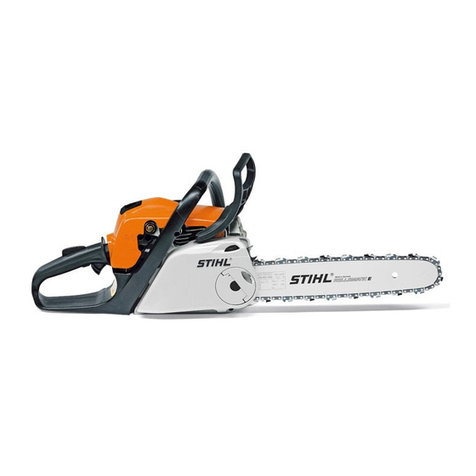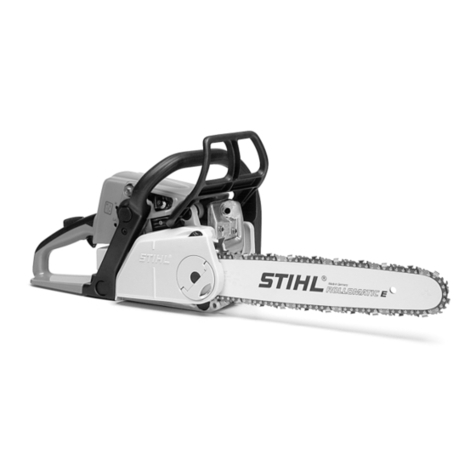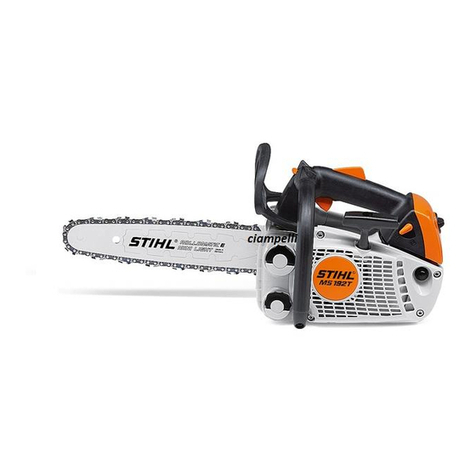
GS 461
English
5
–The diamond abrasive chain must
be suitable for the material to be cut.
It must be in good condition and
fitted correctly (direction of running).
–Correctly tensioned diamond
abrasive chain
–Both the accelerator lever and its
locking to move smoothly – the
accelerator lever has automatically
to return to its idle run position.
–Master control lever can be moved
to STOP or 0
–Check that the spark plug boot is
secure. A loose boot can lead to
flying sparks which may ignite the
escaping fuel/air mixture – risk of
fire!
–Never attempt to modify the controls
or safety devices in any way
–Keep the handles dry and clean,
free from oil and dirt – important for
safe control of the concrete cutter
The concrete cutter should only be used
if it is in full working order – risk of
accident!
Starting the engine
Move at least 3meters away from the
place at which the machine was refueled
and never start the machine in enclosed
spaces.
The machine may only be used on level
ground. Ensure a firm and secure
footing and hold the machine firmly. The
diamond abrasive chain must not touch
any objects or the ground and must not
be in the cut, because it may begin to
rotate when the machine is started.
The engine-driven device is operated by
a single person only – do not allow any
person to stay within the working area –
nor with starting.
Do not drop-start the engine – start as
described in the Instruction Manual.
Before starting, open the shut-off valve
completely and ensure a supply of water
to the diamond abrasive chain – do not
allow diamond abrasive chain to run dry.
Holding and controlling the machine
Always hold the machine firmly with both
hands: Right hand on the rear handle –
even if you are left-handed. To ensure
reliable control, wrap your thumbs tightly
around the handlebar and handle.
The object to be parted-off has to be
firmly supported. Always guide the
device towards the workpiece – never in
reverse.
During operation
Ensure you always have a firm and safe
footing.
In the event of impending danger or in
an emergency, switch off the engine
immediately by moving the master
control lever to STOPor0.
The machine is operated by only one
person. There should not be any other
person within the working area.
Use extreme caution with openings,
recesses, etc., someone could be
standing behind them – look
beforehand.
Never let the machine run unattended.
When the engine is running: The
diamond abrasive chain continues to run
for some time after the throttle trigger
has been released – Risk of injury due to
coasting effect!
Beware of slipping on ice, water, snow
or uneven ground!
Don not work while standing on a ladder
– not at unstable places – not over your
shoulder height – not with one hand only
– risk of accident!
Keep clear the working area – bear in
mind obstacles, holes and pitches.
Never work alone – stay always in
earshot to other persons, who can
render first aid in case of emergency.
More care and attention than usual are
required when wearing ear protection –
warning sounds (shouts, alarms, etc.)
cannot be heard properly.
Take a break in good time to avoid
tiredness or exhaustion – risk of
accidents!
Keep easily combustible materials away
from hot exhaust gases and hot mufflers
– risk of fire! Mufflers with catalytic
converters can become especially hot.
